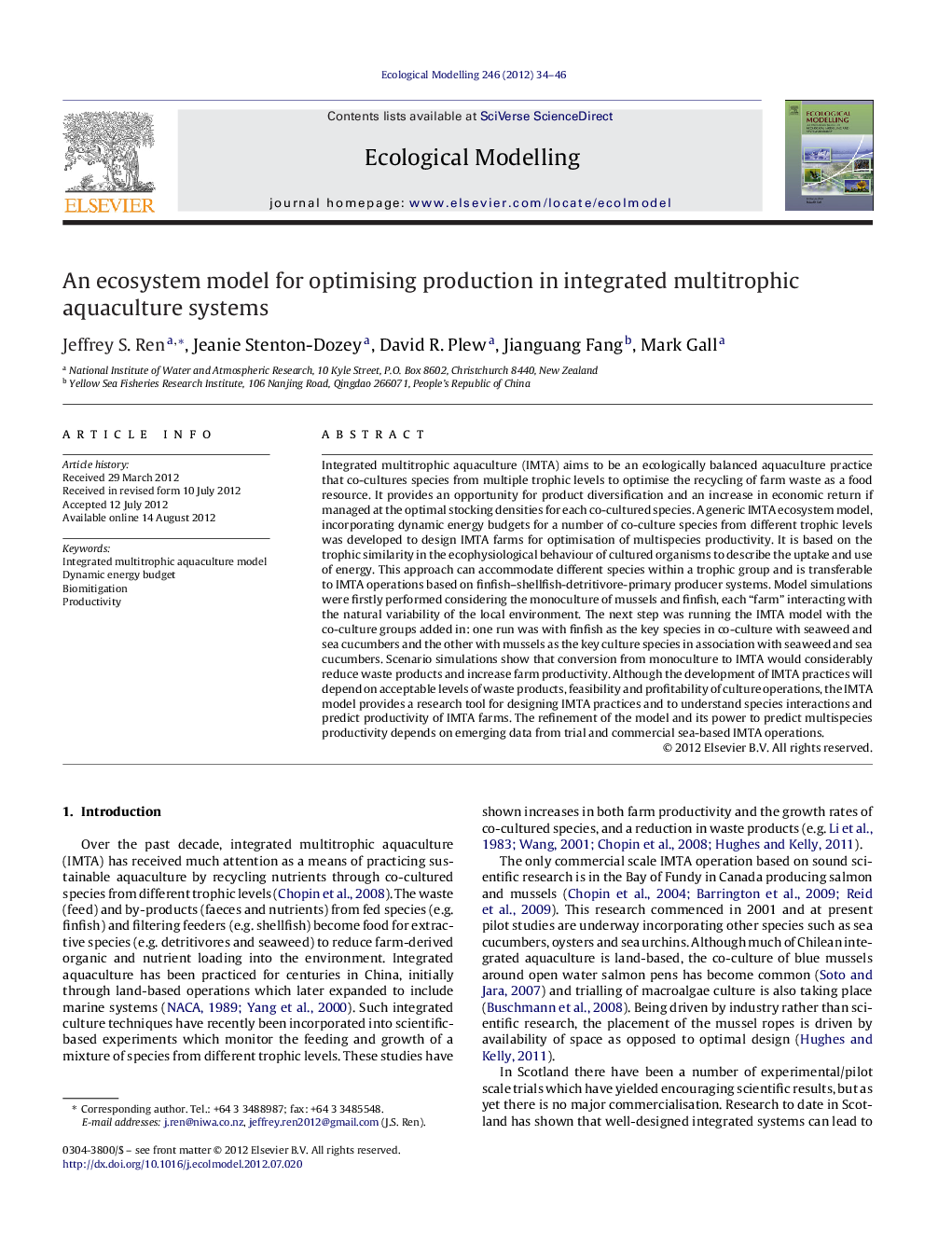| کد مقاله | کد نشریه | سال انتشار | مقاله انگلیسی | نسخه تمام متن |
|---|---|---|---|---|
| 4376288 | 1617499 | 2012 | 13 صفحه PDF | دانلود رایگان |

Integrated multitrophic aquaculture (IMTA) aims to be an ecologically balanced aquaculture practice that co-cultures species from multiple trophic levels to optimise the recycling of farm waste as a food resource. It provides an opportunity for product diversification and an increase in economic return if managed at the optimal stocking densities for each co-cultured species. A generic IMTA ecosystem model, incorporating dynamic energy budgets for a number of co-culture species from different trophic levels was developed to design IMTA farms for optimisation of multispecies productivity. It is based on the trophic similarity in the ecophysiological behaviour of cultured organisms to describe the uptake and use of energy. This approach can accommodate different species within a trophic group and is transferable to IMTA operations based on finfish–shellfish-detritivore-primary producer systems. Model simulations were firstly performed considering the monoculture of mussels and finfish, each “farm” interacting with the natural variability of the local environment. The next step was running the IMTA model with the co-culture groups added in: one run was with finfish as the key species in co-culture with seaweed and sea cucumbers and the other with mussels as the key culture species in association with seaweed and sea cucumbers. Scenario simulations show that conversion from monoculture to IMTA would considerably reduce waste products and increase farm productivity. Although the development of IMTA practices will depend on acceptable levels of waste products, feasibility and profitability of culture operations, the IMTA model provides a research tool for designing IMTA practices and to understand species interactions and predict productivity of IMTA farms. The refinement of the model and its power to predict multispecies productivity depends on emerging data from trial and commercial sea-based IMTA operations.
► A dynamic integrated multi-trophic aquaculture model was developed.
► Multi-trophic integration comprised finfish–shellfish-detritivore-primary producer.
► The model provides a research tool for designing field trials of IMTA.
► Simulations indicate more culture production per hectare than monoculture.
► Potential to reduce the impact of farm-derived dissolved nutrient and particulates.
Journal: Ecological Modelling - Volume 246, 10 November 2012, Pages 34–46